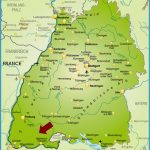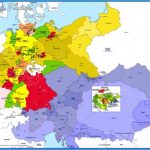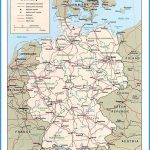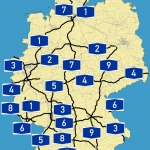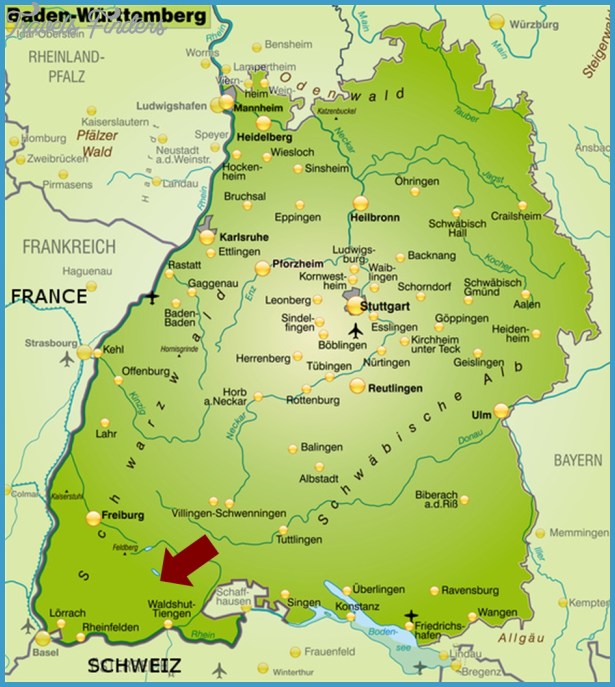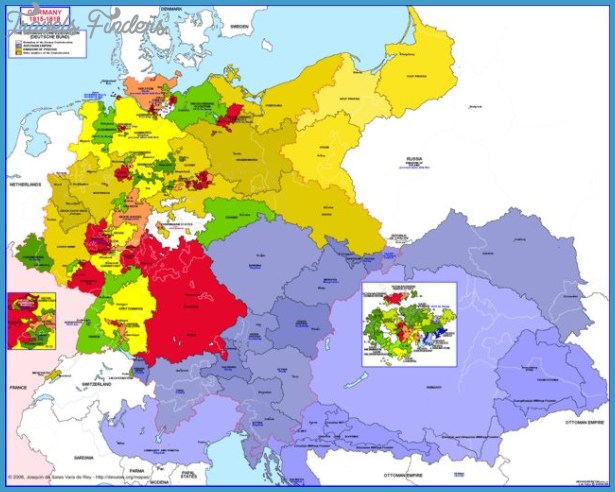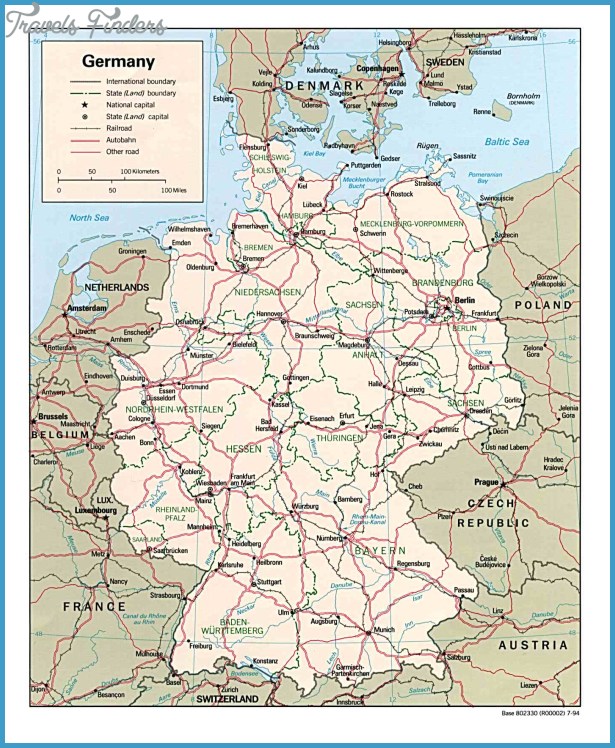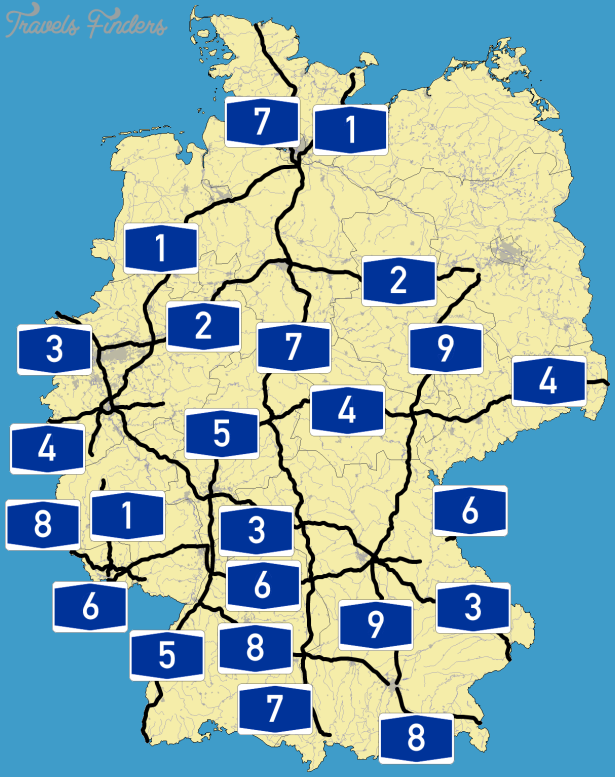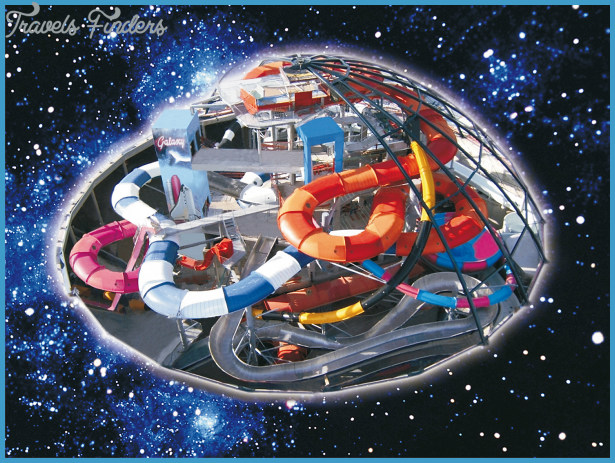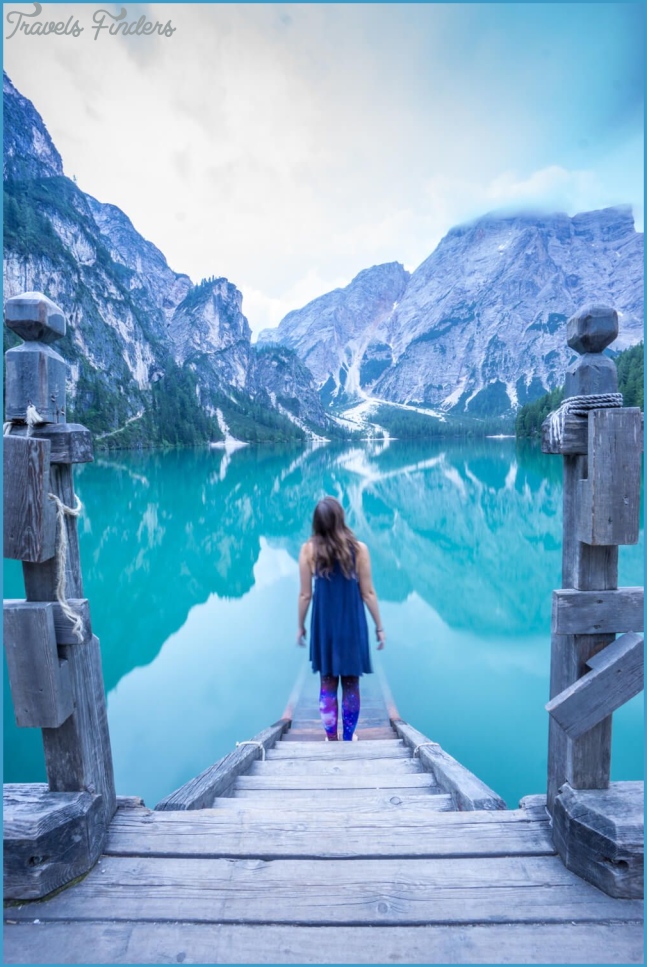GERMANY (DEUTSCHLAND)
Germany is a nation saddled with an incredibly fractured past. Steeped deeply in Beethoven’s fiery orchestration and Goethe’s Faustian whirlwind, modem Germany must also contend with the legacy of xenophobia and genocide left by Hitler and the Third Reich. Even now, more than a decade after the fall of the Berlin Wall, Germans are still fashioning a new identity for themselves. After centuries of war and fragmentation, Germany finds itself a wealthy nation at the forefront of both European and global politics. Its medieval castles, snow-covered mountains, and funky metropolises make Germany well worth a visit.
EARLY HISTORY AND THE FIRST REICH (UNTIL 1400). Early German history actually, most of German history can be summed up as alternating unification and fracture. The Roman Empire conquered the independent tribes that had formerly occupied the area; Roman ruins can still be seen in Trier (486) and Cologne (472). When the Empire collapsed, the Germanic tribes separated again, only to be reunified in the 8th century by Charlemagne (Karl der GroBe) in an empire now known as the First Reich, or kingdom. Charlemagne established his capital at
THREE DAYS Enjoy.two days in Berll (418): Stroffafdng Unter den Linde and the Br’anden-burger Toaiid the leichstag, and explore the Tlergarten. Walk along the East Side Gallery arid visit Checkpoint Charlie for a history of the Berlin Wall, then spend an afternoon at Schloft Sans Soucci (447). Overnight it to Bavarian Munich (492) for a beer-filled last day.
ONE WEEK After scrambling through Berlin (3 days), head north to racy Hamburg (1 day, 460). Take in the cathedral of Cologne (1 day, 472) before heading to the former West German capital Bonn (1 day, 477). End your trip in true Bavarian style with castles, churches, and beer galore in Munich (1 day). Start in Berlin (3 days). Party ip Hamburg (2 days), stop by Liibeck for marzipan (1 day, 468), and zip to Cologne (1′ day). Peek at Charlemagne’s remains in Aachen (1 day, p 472), spend a day in glitzy Frankfurt (479), and then visit Germany’s oldest university in Heidelberg (2 days, 486). Get lost in the fairy-tale Schwarzwald forest (1 day, 490), listen to the Glockenspiel in Munich (2 days), and marvel at Neuschwanstein (1 day, 510). Head to the hills above stunning Berchtes-gaden (1 day, 505), tour the wineries of the Romantic Road (2 days, 508) and take in Trier (1 day, 486), Germany’s oldest city, before ending your trip in Dresden (2 days, 448). Aachen (472), where his earthly remains reside today. After Charlemagne’s death, the empire was split up again. Without a strong leader, the former empire disintegrated into decentralized feudalism. Visit Rothenburg (508) for a glimpse into a medieval walled city typical of the time.
THE NORTHERN RENAISSANCE (1400-1517). Inspired by the new ideas of the Italian Renaissance, northern philosophers developed their own concept of humanism, focusing particularly on religious reform and a return to Classics (virtues and works). Johannes Gutenberg paved the way for widespread dissemination of ideas by inventing the printing press in Mainz (484); his Latin printing of the Bible is arguably the world’s most seminal publication. This invention allowed rapid production of books, which increased literacy and put information in the hands of the people for the first time.
RELIGION AND REFORM (1517-1700). On All Saints’ Day, 1517. Martin Luther nailed his 95 Theses to the door of Wittenberg’s church (456), condemning the Catholic Church’s extravagance and its practice of selling indulgences certificates that promised to shorten the owner’s stay in purgatory. Luther’s ideas sparked the Protestant Reformation, a period of intense religious conflict. During this time, Luther translated the New Testament from Latin into German, standardizing the German language and allowing lay-people to read the Bible directly for the first time. Rising continent-wide tensions between Catholics and Protestants eventually led to the Thirty Years’ War (1618-1648). After the fighting, Germany emerged as a group of small, independent territories, each ruled by a local prince, ripe for conquer, separation, and re-conquer.
RISE OF BRANDENBURG-PRUSSIA (1700-1862). Through a series of strategic marriages, the Hohenzollern family gained control over a large number of these territories. Their kingdom, Brandenburg-Prussia, became an absolutist state when Frederick I crowned himself king in 1701. His grandson, Frederick the Great, acquired huge chunks of land and established Prussia as a major world power. When Napoleon began nibbling at its borders in the early 1800s, Prussia fractured again, remaining a loose and unstable confederation of states even after its defeat.
THE SECOND REICH (1862-1914). In 1862, worldly aristocrat Otto von Bismarck was named chancellor. He believed that blood and iron could create a strong and unified German nation. Bismarck consolidated Prussia into a powerful nation through a series of military movements. The culmination was the Franco-Prussian War in 1870, when the technologically superior Prussians swept through France. Bismarck besieged Paris, and the king of Prussia, Wilhelm I, rose to Kaiser of the German Reich at the Palace of Versailles. Bismarck had presented Germany with an offer it couldn’t refuse: Unification in exchange for an authoritarian monarchy.
WORLD WAR I (1914-1918). On the eve of World War I, Europe was entangled in a complex web of precarious alliances. In 1914, when a Serbian nationalist assassinated Archduke Franz-Ferdinand, heir to the Austrian throne, Austria declared war on Serbia. Germany jumped in to help Austria, and the rest of Europe was soon drawn into full-blown war. After four agonizing years of trench warfare, Germany and its allies were defeated. Germany’s aggressiveness in France, along with its use of unrestricted submarine warfare, allowed the victors to place responsibility for WWI on Germany’s shoulders.

